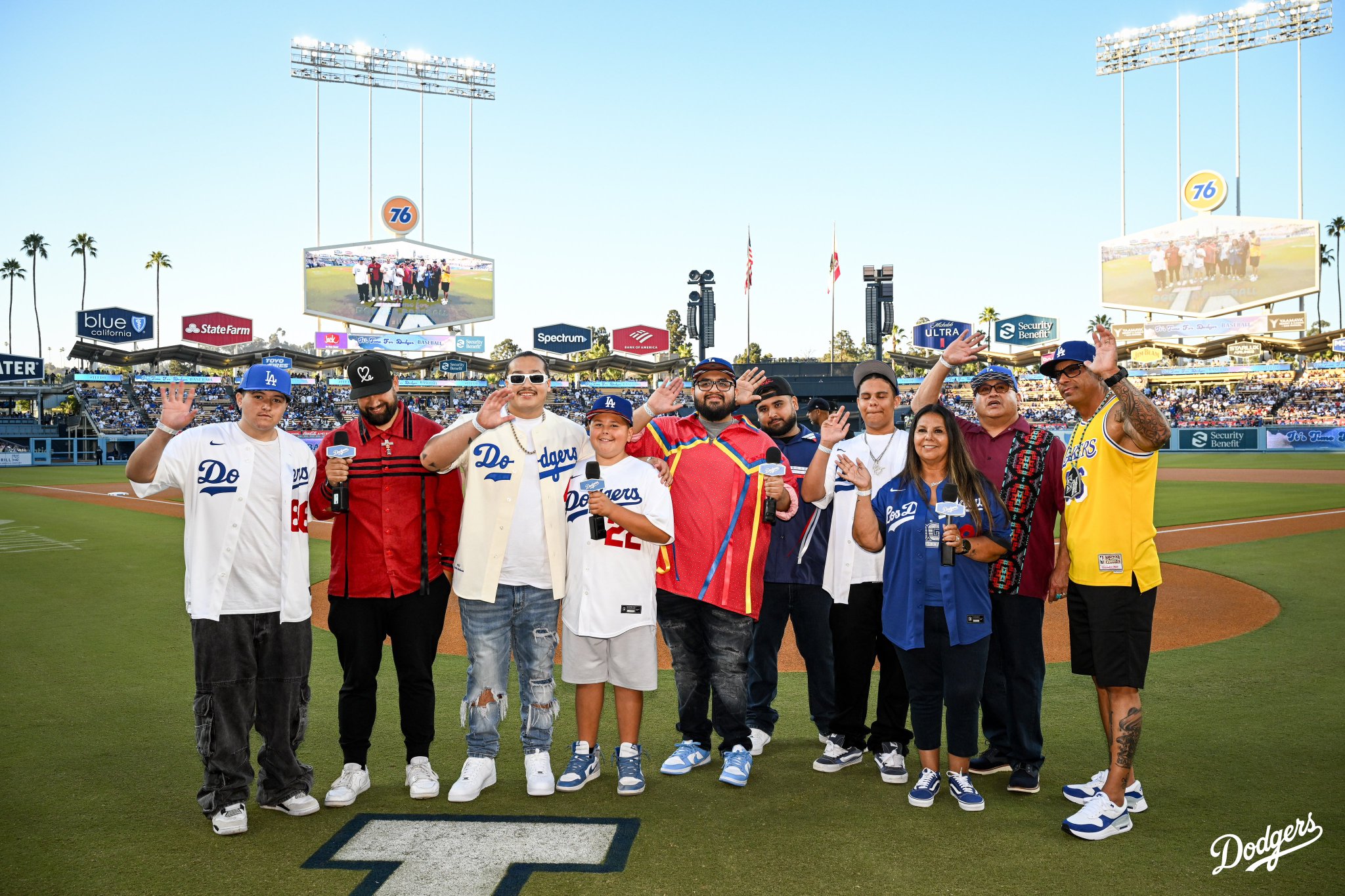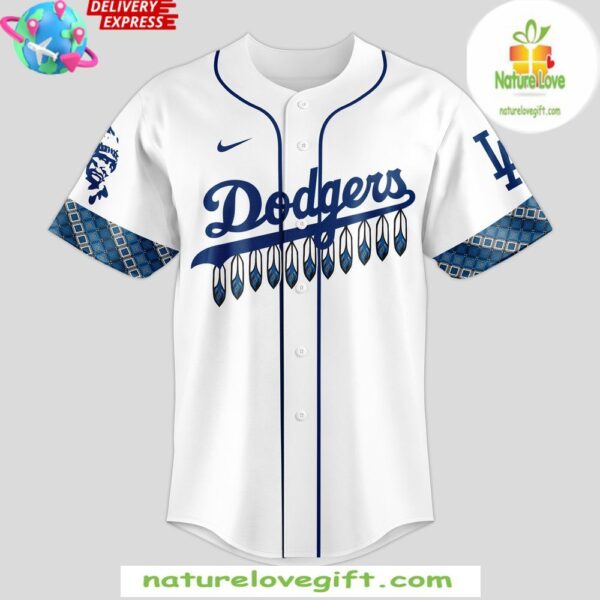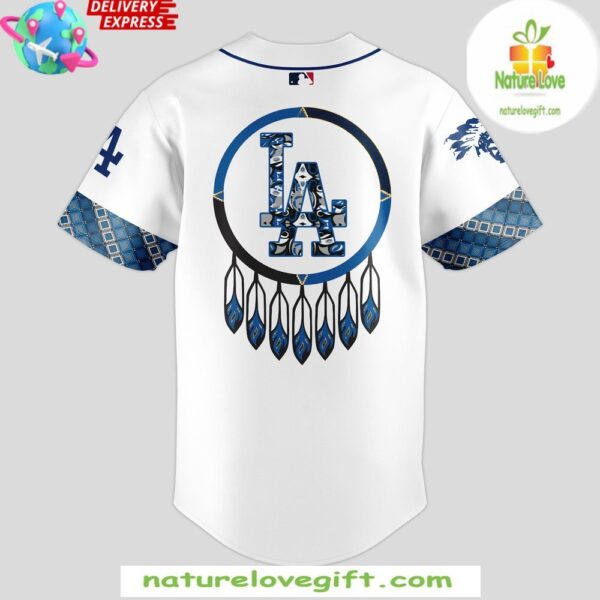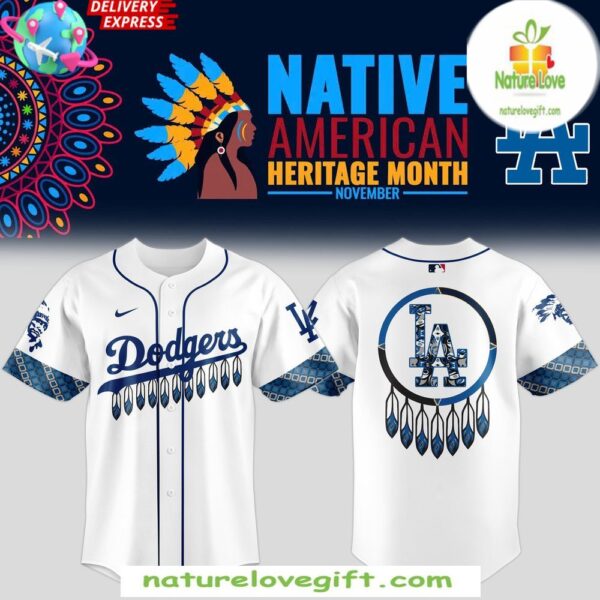MLB Gifts
Native American Heritage Night Dodgers: Celebrating Culture, Community, and Baseball
The Native American Heritage Night Dodgers event represents one of Major League Baseball’s most meaningful cultural celebrations, honoring the rich traditions, contributions, and ongoing presence of Indigenous peoples in Southern California and beyond. This special evening at Dodger Stadium brings together baseball fans and Native American communities to celebrate heritage through ceremonial performances, cultural exhibitions, and the shared love of America’s pastime. The Dodgers’ commitment to recognizing Native American Heritage Month through this annual event demonstrates how sports can serve as platforms for education, respect, and cultural appreciation that extends far beyond the game itself.

What makes Native American Heritage Night particularly significant is its role in raising awareness about Indigenous cultures that have inhabited California for thousands of years, long before baseball existed. The event provides visibility for Native communities often underrepresented in mainstream cultural celebrations while creating educational opportunities for fans of all backgrounds. Through thoughtful programming, authentic cultural representation, and partnerships with local tribal organizations, the Dodgers create experiences that honor Native heritage with the respect and dignity it deserves, making this one of the team’s most impactful community initiatives throughout their season.
The Significance of Native American Heritage Month
Understanding the broader context of Native American Heritage Month helps frame why events like the Dodgers’ celebration matter. Established as a national observance in 1990, November recognizes the achievements, contributions, and sacrifices of Native Americans throughout U.S. history. This month provides dedicated time to learn about diverse Indigenous cultures, acknowledge historical injustices, and celebrate the resilience of Native communities that continue thriving despite centuries of challenges.
California hosts one of the largest Native American populations in the United States, with over 100 federally recognized tribes calling the state home. The Indigenous peoples of Southern California include the Tongva (Gabrielino), Chumash, Serrano, Cahuilla, and many other nations who have stewarded these lands since time immemorial. Their histories, cultures, and contemporary communities deserve recognition year-round, but dedicated heritage events create focused opportunities for education and celebration that might otherwise be overlooked in daily life.
Sports organizations like the Dodgers possess unique platforms to reach diverse audiences with cultural education messages. A single heritage night can introduce tens of thousands of fans to Indigenous traditions, histories, and contemporary issues in ways that feel celebratory rather than lectured. This cultural bridge-building represents sports at their best – bringing people together across differences to share experiences, learn from each other, and celebrate what makes our communities rich and diverse.


History of Native American Heritage Night with the Dodgers
The Dodgers’ Native American Heritage Night has evolved since its inception, reflecting growing awareness of the importance of authentic cultural representation in sports celebrations. Early heritage nights sometimes featured well-intentioned but culturally insensitive approaches that Indigenous advocates worked with teams to improve. The Dodgers’ current programming demonstrates learning and growth, incorporating feedback from Native communities to create more respectful, accurate, and meaningful celebrations.
The event typically includes partnerships with local tribal organizations who help plan programming, ensure cultural authenticity, and provide Native performers and representatives who share their traditions. These collaborative approaches ensure that Native American Heritage Night represents Indigenous peoples accurately rather than perpetuating stereotypes or appropriating sacred traditions. The partnerships also create economic opportunities for Native artists, performers, and businesses who participate in the event or provide materials and services.
Over the years, the Dodgers have refined their approach based on community feedback, focusing on education, respect, and celebration rather than superficial acknowledgment. This evolution mirrors broader societal shifts toward more thoughtful engagement with Indigenous cultures, moving away from mascot controversies and toward genuine cultural appreciation. The Dodgers’ willingness to listen, learn, and adapt demonstrates institutional respect that makes their heritage celebrations meaningful rather than merely performative gestures toward diversity.
Cultural Performances and Ceremonies
The highlight of Native American Heritage Night often includes authentic cultural performances that share Indigenous traditions with the Dodger Stadium audience. These performances might feature traditional drumming and singing by Native musicians, dance demonstrations showcasing specific tribal styles, or storytelling that connects contemporary Native peoples to their ancestral heritage. The performances educate attendees about the diversity of Indigenous cultures while providing Native artists professional platforms for their work.
Opening Ceremonies and National Anthem
Pre-game ceremonies frequently include tribal representatives presenting colors, offering traditional blessings, or performing the national anthem in Indigenous languages or styles. Some events have featured Native American military veterans as color guards, acknowledging Indigenous peoples’ disproportionate military service rates. These opening moments set the tone for the evening, immediately signaling that this isn’t a typical game night but rather a special occasion honoring specific communities and their contributions.
The national anthem performed in Native languages creates powerful moments that remind attendees of the Indigenous peoples who inhabited these lands long before the United States existed. This juxtaposition of American patriotism with Indigenous presence acknowledges complex histories while celebrating contemporary Native Americans who navigate multiple identities as both tribal citizens and American citizens. The performances honor both Indigenous heritage and military service that many Native families have proudly maintained through generations.
Inning Break Entertainment
Throughout the game, cultural demonstrations between innings might showcase traditional crafts, explain the significance of specific tribal symbols, or feature Native dancers performing for the crowd. These brief educational moments keep cultural celebration integrated throughout the evening rather than limiting it to pre-game ceremonies. The approach ensures fans remain engaged with Native heritage even as they enjoy baseball, creating memorable experiences that combine entertainment with learning.
Some heritage nights have featured video presentations sharing stories from local Native community members, highlighting contemporary issues affecting Indigenous peoples, or explaining historical context about the tribes indigenous to the Los Angeles basin. These educational components serve crucial functions in correcting misconceptions, challenging stereotypes, and humanizing Native peoples who are often reduced to historical footnotes or romanticized caricatures in mainstream American consciousness.
Special Merchandise and Commemorative Items
Native American Heritage Night merchandise often includes specially designed items that honor Indigenous cultures while supporting Native artists and communities. These commemorative pieces might feature artwork from Native designers, incorporate traditional patterns with proper cultural context, or include educational elements explaining the significance of specific symbols. The best merchandise represents collaboration with Indigenous artists who receive proper credit and compensation for their creative contributions.
Limited Edition Caps and Apparel
Special edition Dodgers caps featuring Native American designs have become highly sought-after collectibles that sell out quickly during these events. When designed in collaboration with Native artists, these caps represent respectful cultural fusion that honors both baseball fandom and Indigenous heritage. The limited availability creates collectibility while revenue from sales sometimes supports Native American charities or educational programs, adding philanthropic dimensions to commemorative purchases.
T-shirts, jerseys, and other apparel items designed for heritage night walk the fine line between celebration and appropriation. The most respectful approaches involve Native artists creating original designs specifically for the event rather than team merchandisers adapting traditional patterns without Indigenous involvement. Proper attribution, cultural consultation, and revenue sharing with Native communities distinguish respectful collaboration from exploitative appropriation of Indigenous imagery for commercial gain.
Giveaway Items and Educational Materials
Promotional giveaways for heritage night attendees might include items with educational value beyond typical baseball swag. Past events have featured booklets about local tribal history, posters featuring Native artists’ work, or items incorporating QR codes linking to additional educational resources about Indigenous cultures. These thoughtful giveaways extend the event’s impact beyond a single evening, providing materials that fans can explore later to deepen their understanding of Native American heritage.
The quality and cultural appropriateness of giveaway items reflect the event’s overall respect for Indigenous peoples. Cheap trinkets featuring stereotypical “Indian” imagery undermine heritage celebrations, while thoughtfully designed items created with Native input honor the cultures being celebrated. The difference between these approaches determines whether heritage nights serve as meaningful cultural education or merely tokenistic gestures that check diversity boxes without genuine commitment to Indigenous communities.
Community Partnerships and Tribal Involvement
Successful Native American Heritage Night events depend on genuine partnerships with Indigenous communities rather than organizations planning celebrations about Native peoples without Native involvement. The Dodgers’ relationships with local tribal governments, urban Indian centers, and Indigenous organizations ensure that heritage night programming reflects authentic Native perspectives and priorities rather than non-Native assumptions about what constitutes appropriate celebration.
Local Tribal Participation
Southern California tribes including the Tongva, whose ancestral lands include the Los Angeles basin, play crucial roles in heritage night planning and execution. Tribal representatives might serve on advisory committees ensuring cultural appropriateness, provide performers and speakers, or staff information booths educating fans about their communities. This direct involvement ensures that the event serves Native communities’ interests rather than merely using Indigenous imagery for promotional purposes.
Financial arrangements between the Dodgers and participating tribes can range from standard vendor contracts for services provided to charitable donations supporting tribal programs. Transparent, equitable partnerships that fairly compensate Native participants for their time, knowledge, and cultural sharing demonstrate respect that distinguishes meaningful collaboration from exploitative relationships. The best partnerships create ongoing relationships extending beyond single events into year-round support for Indigenous communities and causes.
Educational Outreach
Heritage night provides platforms for Native-led educational organizations to reach new audiences with information about contemporary Indigenous issues, opportunities to support Native businesses, and resources for continued learning. Information booths staffed by Native community members allow direct conversations between Indigenous peoples and fans who may have limited prior exposure to Native cultures. These personal interactions humanize Indigenous communities and challenge stereotypes more effectively than passive educational displays alone.
Some heritage nights have included youth components where Native students from local schools participate in on-field activities, receive recognition for academic or athletic achievements, or perform for the crowd. These opportunities provide positive experiences for Native youth while increasing their visibility and demonstrating to all attendees that Indigenous peoples are thriving contemporary communities rather than historical relics existing only in the past.

Addressing Cultural Sensitivity and Appropriation Concerns
Navigating cultural sensitivity in sports heritage nights requires careful attention to the difference between appreciation and appropriation. Appreciation involves respectfully learning about, acknowledging, and celebrating cultures with permission and participation from those cultures’ members. Appropriation takes cultural elements without permission, understanding, or proper context, often for commercial gain while ignoring the source culture’s ongoing struggles and humanity.
Avoiding Stereotypes and Offensive Imagery
Respectful Native American heritage celebrations avoid stereotypical imagery like Plains Indian headdresses that don’t represent California Indigenous peoples, “Hollywood Indian” costumes that caricature Native cultures, or sacred symbols used in inappropriate contexts. These problematic representations persist in popular culture despite Indigenous advocates’ longstanding objections, making it crucial that heritage nights model respectful approaches rather than perpetuating harmful stereotypes.
The Dodgers’ evolution away from any potentially offensive imagery demonstrates organizational learning and respect for Indigenous communities’ feedback. When Native advocates raise concerns about specific elements of heritage celebrations, responsive organizations listen and make adjustments rather than dismissing criticism as oversensitivity. This willingness to accept guidance from Indigenous peoples about their own cultures shows the humility required for authentic allyship and respectful cultural celebration.
Meaningful vs. Performative Allyship
Genuine support for Native communities extends beyond single annual events into year-round action addressing issues affecting Indigenous peoples. Meaningful allyship might include hiring Native employees, supporting Native-owned businesses, donating to Indigenous causes, or using organizational platforms to amplify Native voices on important issues. Without these sustained commitments, heritage nights risk appearing as performative diversity gestures that allow organizations to claim Indigenous support without meaningful follow-through.
The difference between meaningful and performative allyship becomes evident in how organizations respond to Indigenous advocacy on controversial issues like mascot changes, land acknowledgments, or support for tribal sovereignty. Organizations willing to take stands that may be unpopular but align with Indigenous communities’ expressed priorities demonstrate authentic commitment, while those limiting support to uncontroversial celebrations reveal more superficial engagement with Native causes and concerns.
Impact on Native American Communities
The impact of heritage night on Indigenous communities varies depending on how events are planned and executed. Well-done celebrations provide economic opportunities for Native artists and businesses, increase positive visibility for Indigenous peoples, and create educational opportunities that challenge stereotypes. Poorly executed events can perpetuate harmful representations, appropriate sacred traditions, or reduce complex cultures to superficial entertainment for non-Native audiences.
Economic Benefits
Heritage night creates economic opportunities for Native vendors, artists, performers, and consultants hired to contribute their expertise and cultural knowledge. These paid opportunities matter significantly for Indigenous communities experiencing higher poverty rates than general populations due to historical injustices and ongoing systemic barriers. Fair compensation for Native participation ensures that heritage nights provide tangible benefits rather than merely extracting cultural content for organizational promotional purposes.
Merchandise featuring Native artists’ work, when properly compensated through licensing agreements or royalties, can provide ongoing income streams extending beyond the single event. Some heritage nights have led to longer-term business relationships between teams and Native-owned companies supplying goods or services. These economic impacts, while modest compared to overall franchise revenues, can significantly benefit individual Native artists and small businesses for whom every opportunity matters.
Representation and Visibility
Positive representation in mainstream venues like major league baseball games matters because it counters Indigenous peoples’ invisibility in contemporary American society. Many Americans rarely encounter accurate information about Native cultures, contemporary Indigenous communities, or issues affecting Native peoples, making heritage nights rare opportunities for education and visibility. Seeing Indigenous peoples represented respectfully in popular culture settings helps counter the erasure that treats Native Americans as historical artifacts rather than vibrant, diverse communities thriving today.
For Native attendees, particularly youth, seeing their cultures honored in prestigious venues like Dodger Stadium provides powerful messages about Indigenous peoples’ value and place in American society. These positive experiences counter the marginalization and stereotyping that Indigenous peoples face in daily life, offering moments of pride and recognition that affirm their identities and cultures as worthy of celebration and respect.
How Fans Can Respectfully Participate
Attending Native American Heritage Night as a non-Native fan offers opportunities for learning and celebration, but requires approaching the event with respect and cultural sensitivity. Understanding appropriate ways to participate ensures you honor Indigenous cultures rather than inadvertently contributing to appropriation or stereotyping.
What to Wear (and Not Wear)
Avoid wearing Native American costumes or ceremonial regalia like headdresses, which are sacred items with cultural significance that non-Native people shouldn’t wear. These items aren’t costumes but rather possess deep spiritual and cultural meanings within specific Indigenous communities. Wearing them casually or as “support” demonstrates cultural insensitivity regardless of intent, reducing sacred traditions to fashion accessories while perpetuating stereotypes.
Instead, wear regular Dodgers gear or purchase official heritage night merchandise created in collaboration with Native artists. Support Native-owned businesses by seeking authentic Indigenous-made items rather than mass-produced knock-offs appropriating Native designs. If you own



